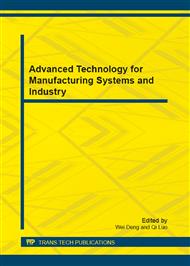[1]
J. R. Hull, Superconducting Bearings, Supercond. Sci. Technol. 13 (2000) R-1.
Google Scholar
[2]
P. T. Putman, Y. X. Zhou, H. Fang, et al., Application of melt-textured YBCO to electromagnetic launchers, Supercond. Sci, Technol. 18 (2005) S6–S9.
DOI: 10.1088/0953-2048/18/2/002
Google Scholar
[3]
H. Fujimoto, H. Kamijo, T. Higuchi, Y. Nakamura, K. Nagashima, M. Murakami, S. I. Yoo, Yoo, Preliminary study of a superconducting bulk magnet for the Maglev train, IEEE Trans, Appl. Supercond. 301 (1999) 9.
DOI: 10.1109/77.783295
Google Scholar
[4]
J. S. Wang, S. Y. Wang, Y. W. Zeng, H. Y. Huang, F. Luo, Z. P. Xu, et al., The first man-loading high temperature superconducting Maglev test vehicle in the world, Physica C. 378-381 (2002) 809-814.
DOI: 10.1016/s0921-4534(02)01548-4
Google Scholar
[5]
L. Schultz, O. de Haas, P. Verges, C. Beyer, S. Rohlig, H. Olisen, L. Kuhn, D. Berger, U. Noteboom, and U. Funk, Superconductively Levitated Transport System—The SupraTrans Project, IEEE Trans. Appl. Supercond. 15 (2005) 2031-(2035).
DOI: 10.1109/tasc.2005.849636
Google Scholar
[6]
H. Jing, J. S. Wang, S. Y. Wang, W. Liu, C. Y. Deng, M. Jiang, et al., A two-pole halbach permanent magnet guideway for high temperature superconducting Maglev vehicle, Physica C. 463-465 (2007) 426-430.
DOI: 10.1016/j.physc.2007.05.030
Google Scholar
[7]
T. Hikihara and F. C. Moon, Levitation drift of a magnet supported by a high-Tc superconductor under vibration, Physica C. 250 (1995) 121–127.
DOI: 10.1016/0921-4534(95)00346-0
Google Scholar
[8]
D. H. Jiang, G. T. Ma, Q. X. Lin, et al., Levitation-Force Investigation of High-Temperature Superconducting Maglev System Under Different Variations of the Vertical Displacement, Journal of Superconductivity and Novel Magnetism. 25, (2012) 5-30.
DOI: 10.1007/s10948-011-1202-9
Google Scholar
[9]
J. S. Wang and S. Y. Wang, Synthesis of bulk superconductors and their properties on permanent magnet guideway, in Frontiers in Superconducting Materials, A. Narlikar, Ed. Berlin, Germany: Springer Verlag (2005) 885–912.
DOI: 10.1007/3-540-27294-1_24
Google Scholar
[10]
Hua Jing, Suyu Wang, Ming Jiang and Jiasu Wang, Levitation performance of bulk high temperature superconductor above the permanent magnet guideway at different temperatures, Journal of Superconductivity and Novel Magnetism. 23 (2010) 1455-1459.
DOI: 10.1007/s10948-010-0794-9
Google Scholar
[11]
He Jiang, Jiasu Wang, Suyu Wang, Zhongyou Ren, et al., The magnetic levitation performance of YBaCuO bulk at different temperature, Physica C. 378–381 (2002) 869-872.
DOI: 10.1016/s0921-4534(02)01816-6
Google Scholar
[12]
J. S. Wang, S. Y. Wang, et al., High Tc Superconducting Magnetic Levitation Measurement System. High Technology Letters. 10 (2000) 56-58 (In Chinese).
Google Scholar



